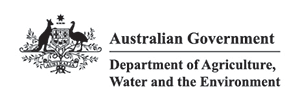
This project is supported by funding from the Australian Government Department of Agriculture, Water and the Environment as part of its Rural R&D for Profit program.
Digital technology is rapidly expanding its presence and impact in the wine sector, and the next stop could be at the weighbridge.
Researchers at the AWRI are trialling a new way to objectively measure bunch rot and matter other than grapes (MOG) in fruit as it arrives, using near infrared (NIR) hyperspectral imaging.
NIR technology is widely used in the food industry to test for disease and other quality parameters, such as moisture, oil or protein levels in wheat. It works because all organic material has a specific spectral signature.
Hyperspectral imaging takes it to the next level by creating an image where each pixel contains a spectral fingerprint over a large wavelength range, rather than just red, green and blue (RGB) as in a normal digital image. This spectral information can be used to identify and quantify material in the image.
The aim of the current project, funded by theDepartment of Agriculture, Water and the Environment as part of its Rural R&D for Profit program and Wine Australia, is to validate the technology in a wine setting and develop a cost-effective approach that would meet the specific needs of winemakers and grapegrowers.

‘At the moment, vineyards are checked prior to harvest to make sure the fruit is clear of disease’, said project leader Dr Paul Petrie. ‘That’s still the best place to do it, because if it’s not suitable you don’t want it arriving at the winery anyway – and you have incurred the extra costs of harvesting and transport.’
‘But in wet conditions, such as the 2011 season, if you do an assessment on a Thursday and the grapes are booked to be delivered on a Monday, they can go from being just OK to unsuitable in that time. This work aims to develop a process to be able to pick that up.
‘It may not be a case of rejecting the fruit; instead you might divert it into a different product or treat it differently; using pasteurisation for example.’
The first stage of the work was carried out in the lab, using grapes that Dr Petrie and Dr Bob Dambergs had infected themselves using Botrytis spores, and the results have been pleasing.
‘We have the camera system set up and running well and we can quite confidently distinguish disease-affected grapes from good grapes, shrivelled grapes from non-shrivelled grapes and sour rot from Botrytis if we need to’, Dr Dambergs said.

The next stage is to take the technology out to a weighbridge – or at least a simulated weighbridge setting – to test the logistics. They range from developing a method to reliably extract the grape samples from the load, to working out how to put them under the camera with the right lighting so that consistent images can be captured.
‘We need to get a better understanding of the opportunities and the restrictions of sampling on-site. Would it be feasible to have a camera mounted over the bin to take the image or are there going to be issues with how far the camera is from the bin? Is the resolution high enough and can we get the right lighting to get the spectral signature that we need?
‘Can we manage logistical problems or are we going to have to have a solution where we take a sample out of the bin and put it into a lab environment right next to weighbridge?’
Drs Petrie and Dambergs hope that by the end of next vintage they will be in a situation where a company could make a decision about using the technology and ‘we could provide them with enough information so that they could implement it’.
